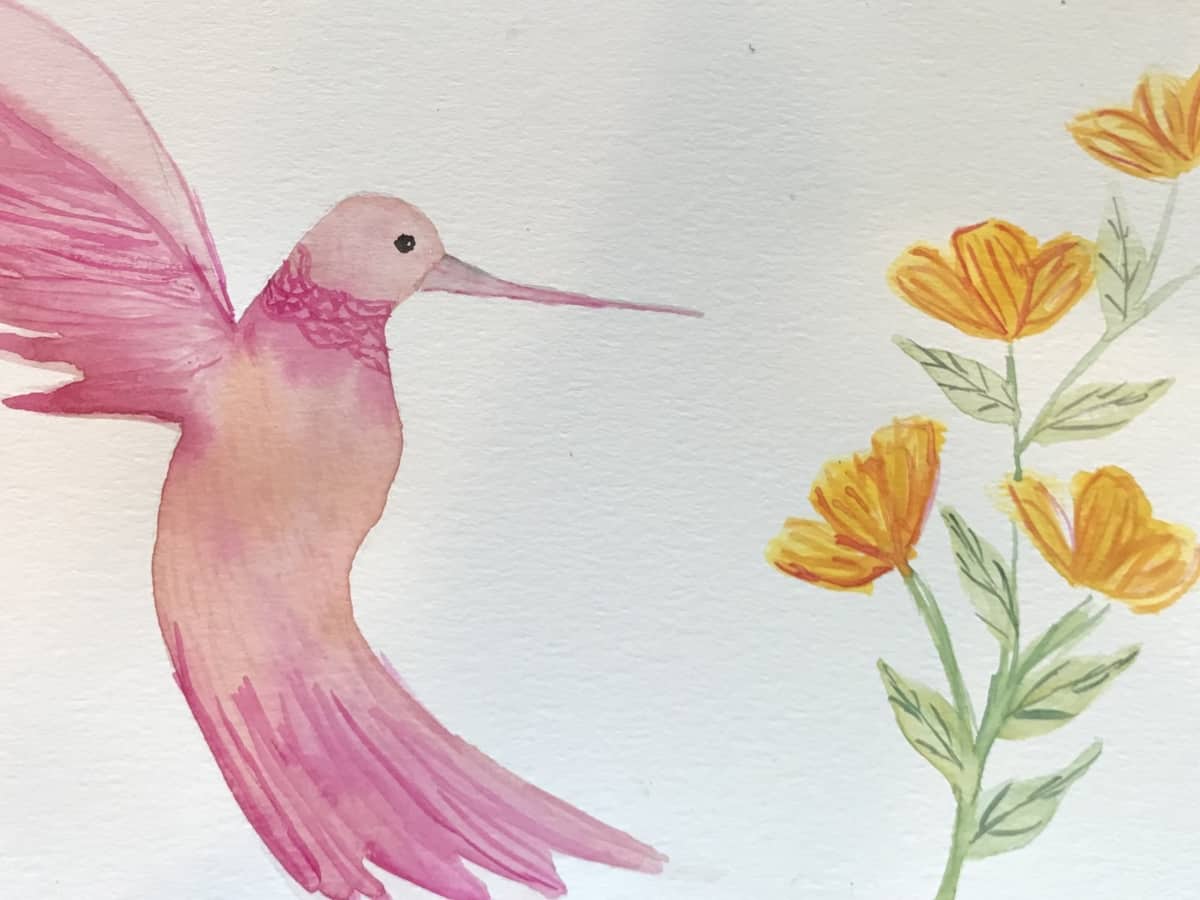
Gifts of Spring: Flowering Plants of the Skagit Valley
Paying attention is a form of reciprocity with the living world, receiving the gifts with open eyes and open heart.”
– Robin Wall Kimmerer
A certain power exists in walking down the same path every week while paying attention to the cyclical nature of seasonal change. I have intentionally observed how summer greens turn into brilliant autumn colors before leaves drift peacefully from their elevated vantages to sleep under the compact winter snow. Throughout the winter, bare twigs and branches punctuate the landscape. The haunting whistle of the varied thrush, the conifer trees, and the harsh sounds of corvids serve as a reminder that the forest, even in winter, remains alive. As in every cyclical process, we now must return to the beginning by transitioning from cold winter to warming spring. We awaken, to stretch our emerging leaves toward the sun and remind ourselves that if we pay attention, we can receive each flowering plant as a gift.
The Environmental Learning Center is coming alive with young leaves and new growth. Brightly colored flowers add vibrancy to the already spectacular landscape of snow capped mountains and turquoise Diablo Lake. Here are a few of the first flowering plants that we see around campus and out on the trails!
~ Salmonberry (Rubus spectabilis) ~
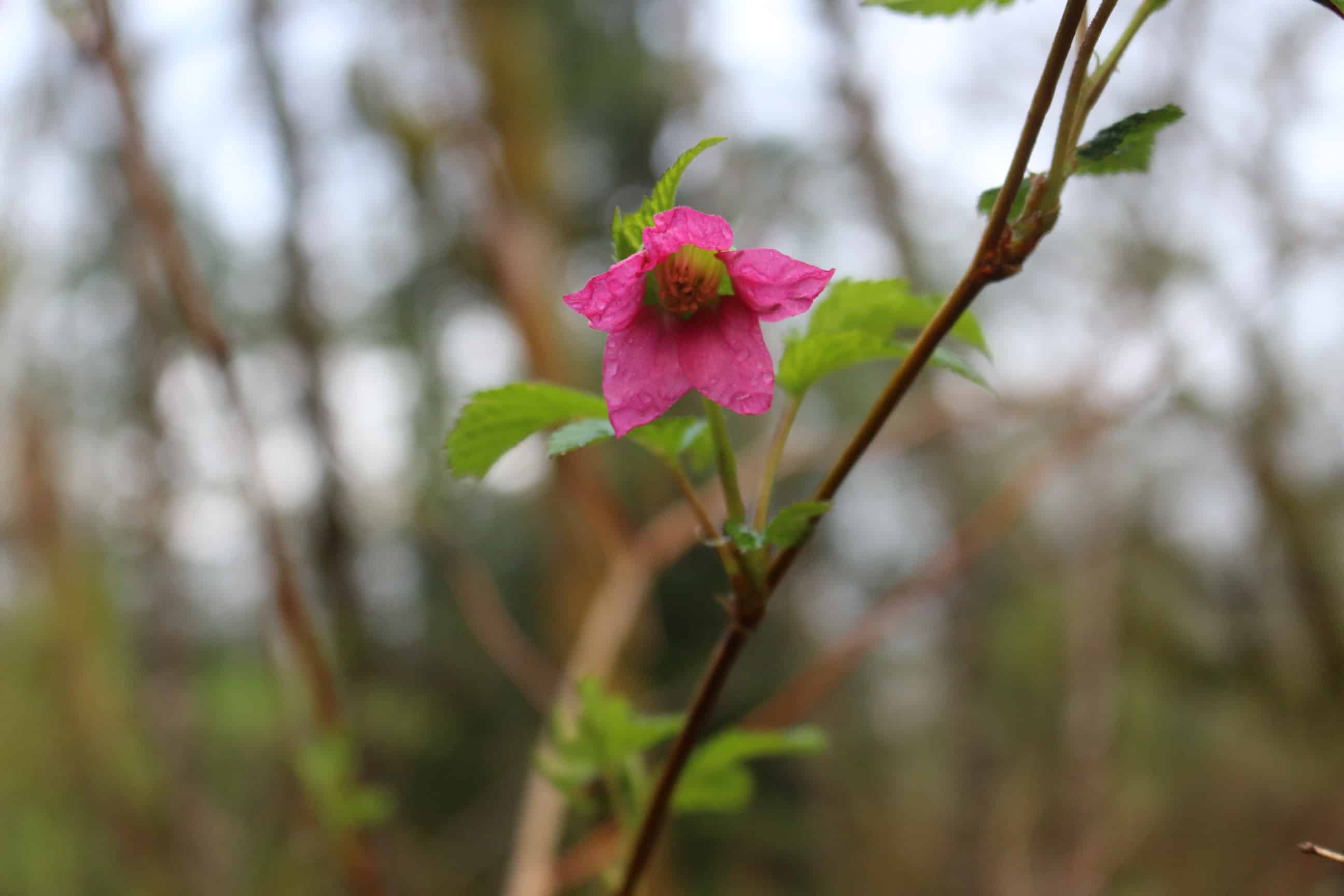
Brilliant bright pink flowers are some of the first to bloom in the Spring. These flowers stand out against the vibrant green of the alternately arranged, sharply-toothed, three lobed leaves of the Salmonberry. It is exciting to watch as these large flowers transform into delicious fruits. The water-filled raspberry-like fruit, the Salmonberry’s namesake, looks like a cluster of salmon eggs. Make sure to enjoy these beautiful Salmonberry flowers while they are here and enjoy the taste of the berries as summer creeps closer.
~ Big Leaf Maple Flower (Acer macrophyllum) ~
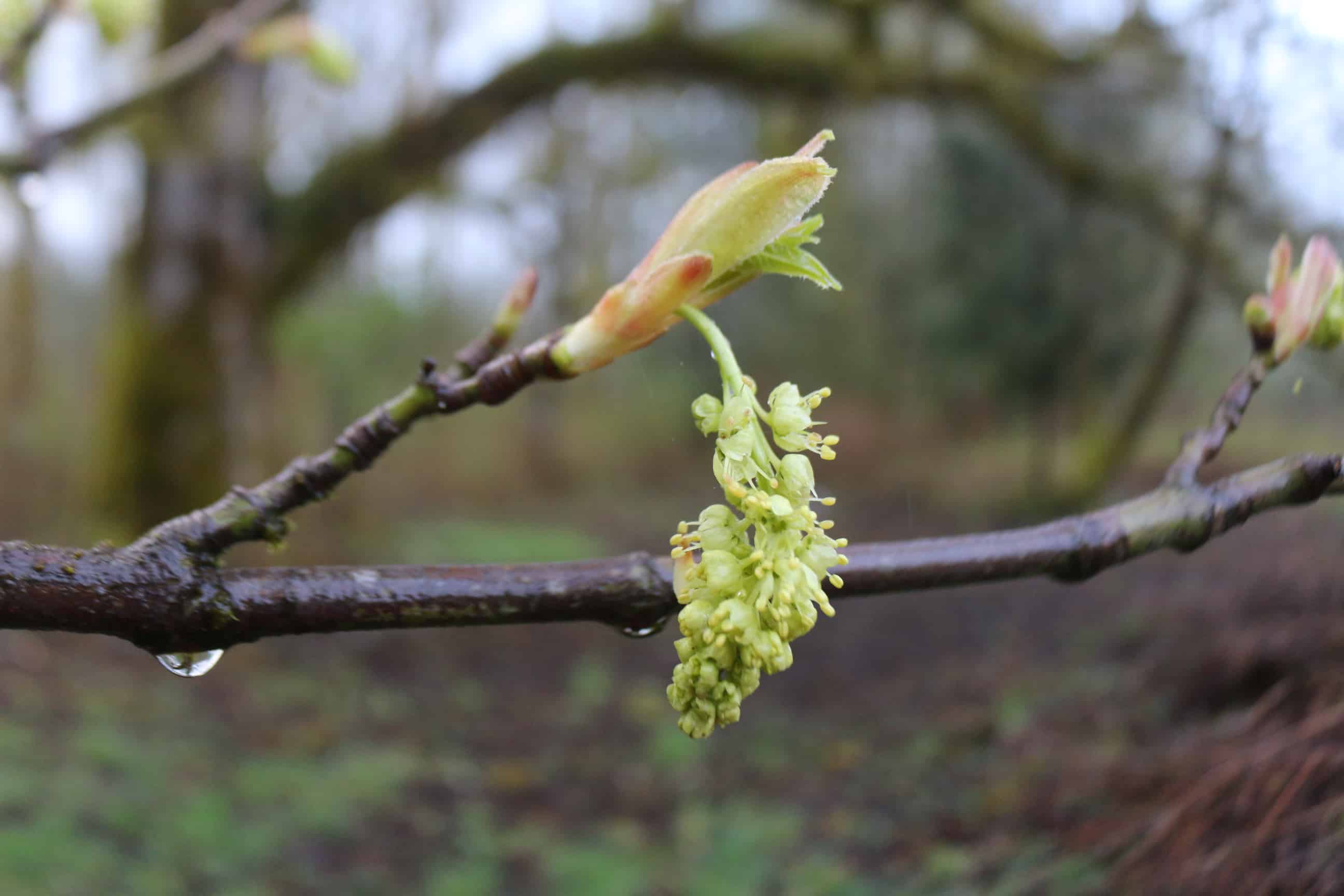
Dangling from the branches of these moss covered deciduous trees, Big Leaf Maple flowers bud before the large five lobed leaves emerge. The flowers are greenish-yellow in color and dangle from the tree in clusters. Big Leaf Maple flowers are quite tasty and have a nutty flavor. I recommend making Big Leaf Maple flower fritters by dipping the clusters in pancake mix and frying on the stove.
~Red Flowering Currant (Ribes sanguineum) ~
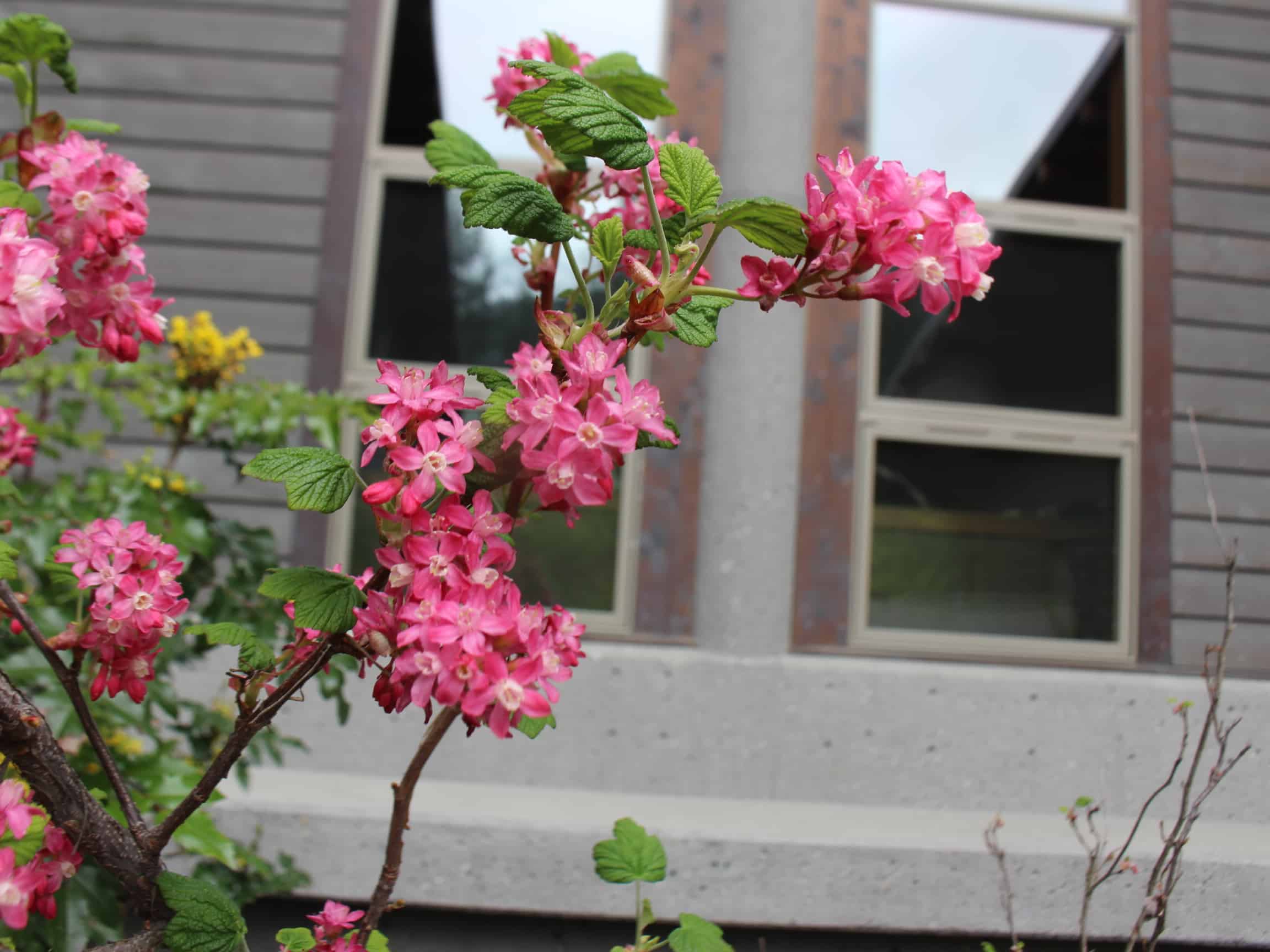
The clusters of red flowers occur on the Red Flowering Currant before the duck-foot like leaves appear on shrubby branches. I appreciate these vibrant flowers as welcome signs of Spring because flowering occurs during the early-Spring and correlates with the arrival of Rufous Hummingbirds . This incredible relationship between early flowering plants and the arriving birds and pollinators that depend on the blooms for survival reminds me of the inter-connectedness of nature on a micro time scale.
~Pacific Bleeding Heart (Dicentra formosa)~
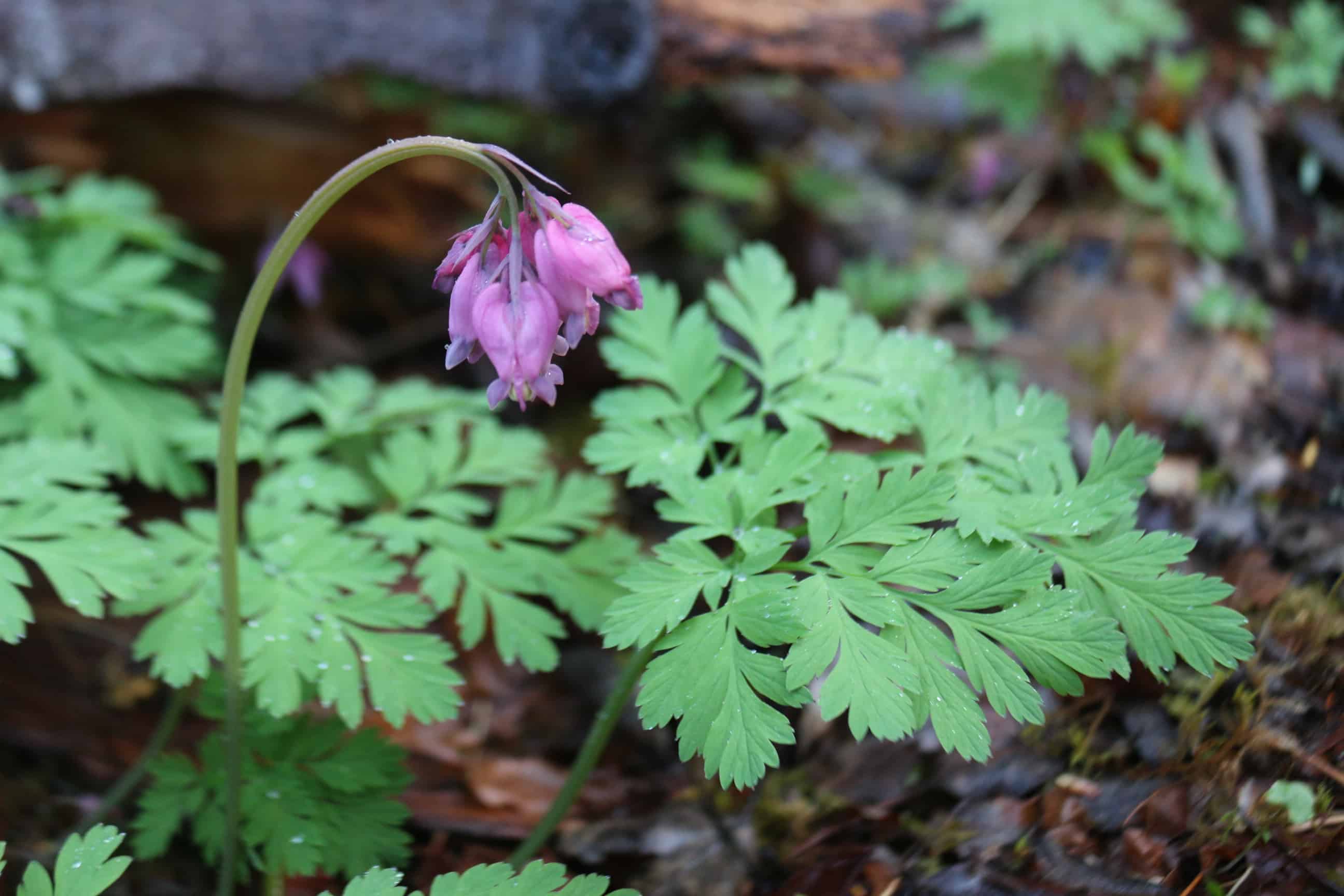
The Pacific Bleeding Heart is another flowering plant that blooms in time to be an early food resource to hummingbirds and a host of pollinators. In shady areas, the elegant fern-like leaves of the Pacific Bleeding Heart spread out along the forest floor. Several pink flowers dangle gracefully from an elongated stem. Petals of the bleeding heart come together to form the heart shaped flower making bleeding “heart” a fitting name for these spring blooms.
~ Red Elderberry (Sambucus racemosa) ~
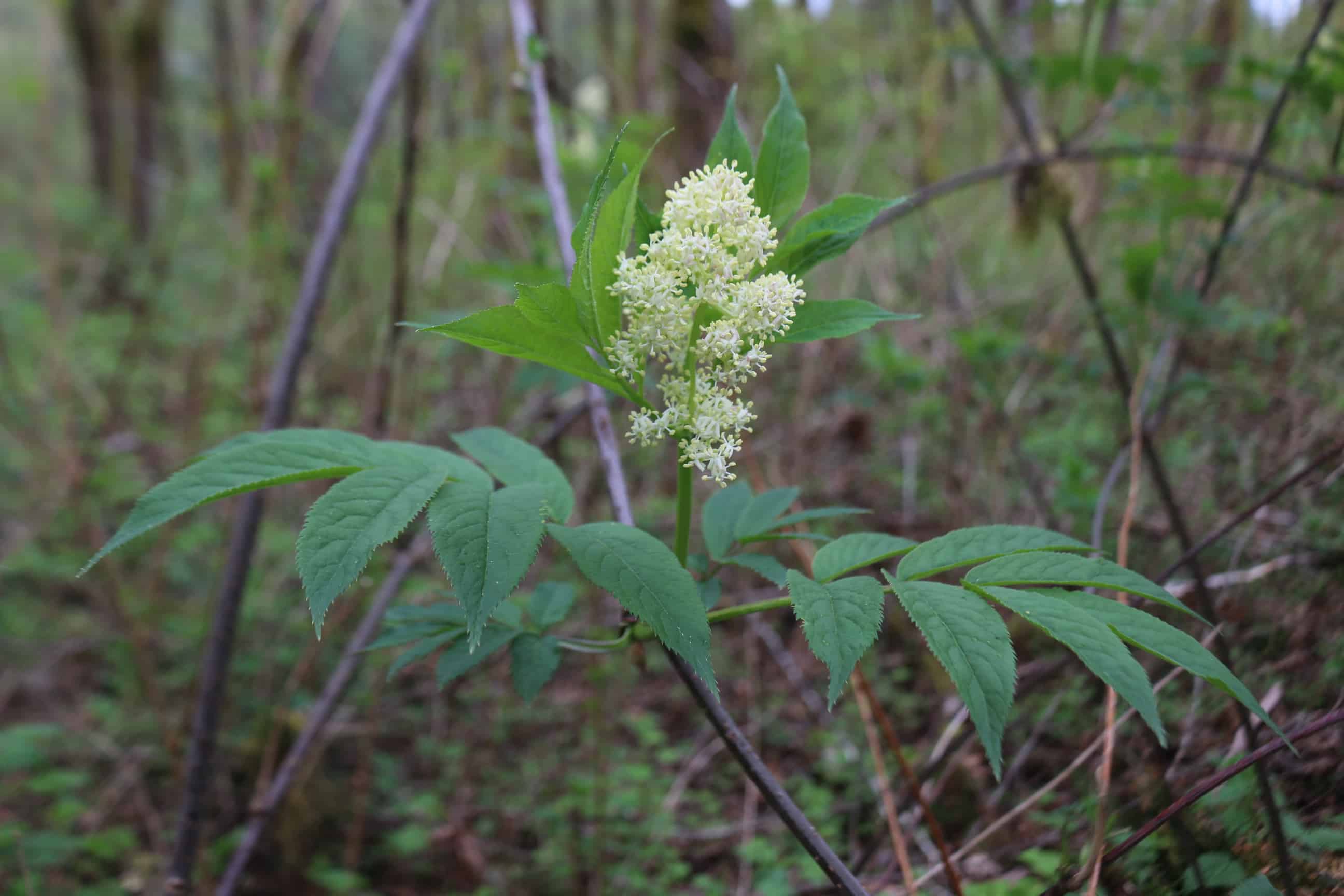
The Red Elderberry is a pithy shrub-like tree with leaves that are divided into 5-7 lance-shaped leaflets. The flowers are white in color and the conical clusters are fairly visible among the growing understory of the forest. The pyramid or umbrella-like structure of the flowers and subsequent bright red berries are features that distinguish the Red Elderberry from the Blue Elderberry. The Blue Elderberry has flat-topped, instead of conical, white flower clusters and blue fruit. Both species of elderberries are present at low to mid-elevations throughout the North Cascades Ecosystem so keep your eyes peeled for these beautiful flowers.
~Pacific Dogwood (Cornus nuttallii)~
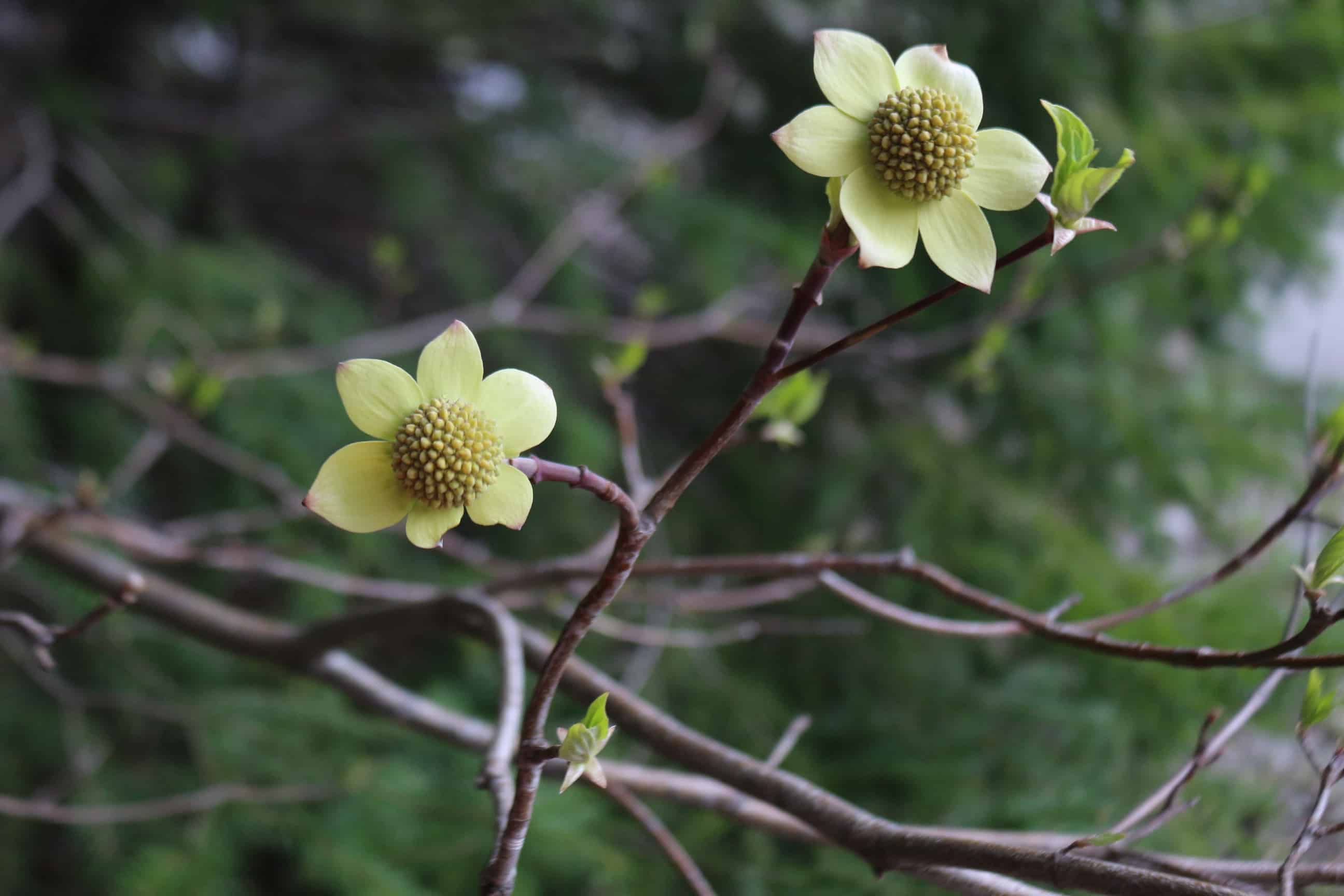
At the entrance to the Environmental Learning Center, just before crossing over Sourdough Creek, the Pacific Dogwood stands with remnants of last years fruit among the newly opened flowers. The dogwood flower look like many greenish-white flowers clustered together in a sphere-shape. Surrounding the flower are 4-6 white specialized leaves called bracts that resemble petals. As Sourdough Creek transitioned from frozen to variable spring flow, the dogwood accompanied these changes by budding, flowering and the petal-like leaves turning from green to white.
~Indian Plum (Oemleria cerasiformis)~
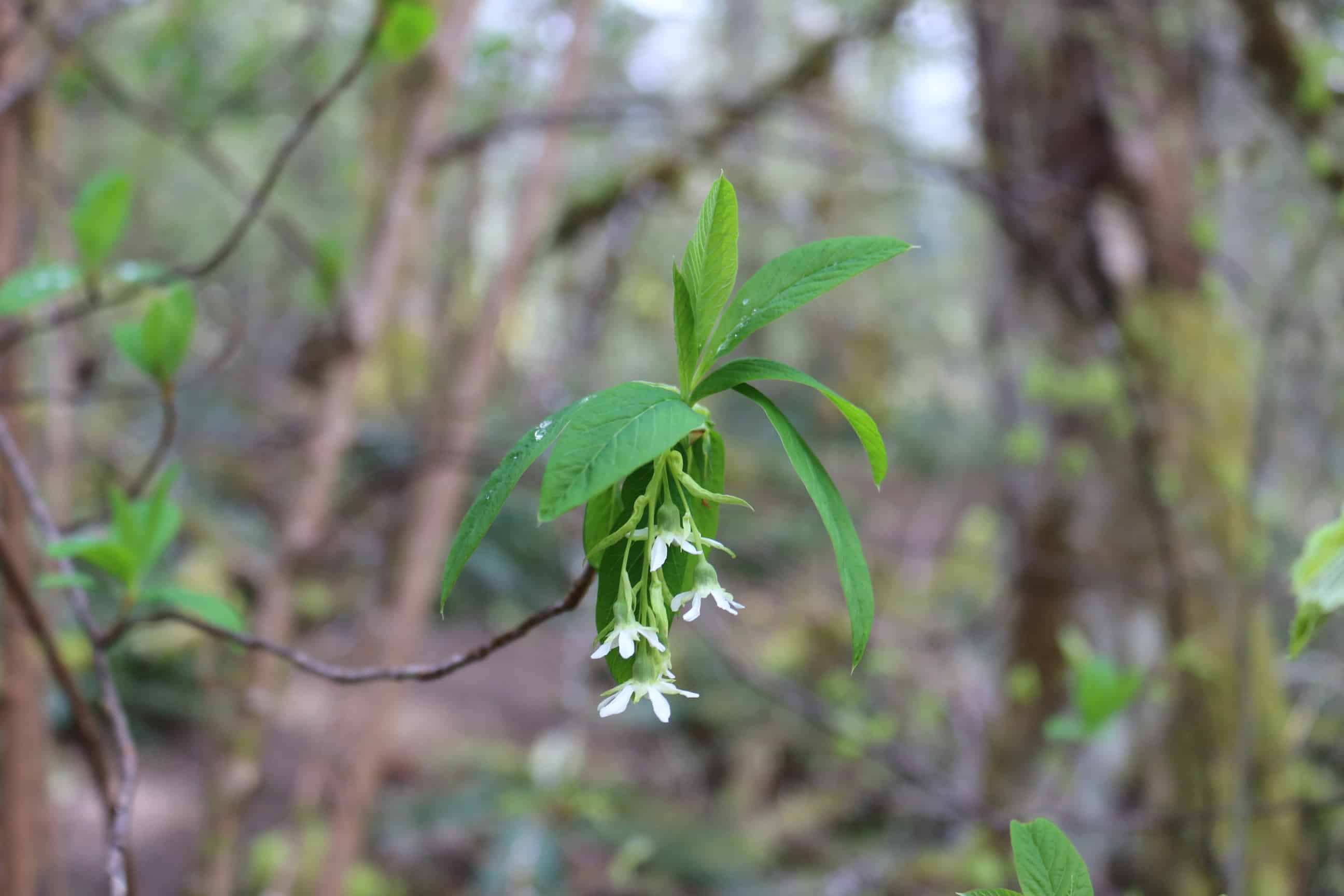
Indian Plum is one of the first plants to lose it’s cucumber scented lance-shaped leaves in the autumn and one of the first plants to have leaves emerge in the spring, the Indian Plum flowers have been around for several weeks. I have greatly enjoyed watching as the jewel-like leaf buds gave vibrancy to the forest and the flowers began to dangle gracefully. At lower elevations, green fruit is present on the Indian Plum with the small white flowers becoming less prevalent. Look for the Indian Plum around streambanks and Diablo Lake. You might just find some Indian plum still in bloom before dangling fruit replaces these tiny flowers.
~Tall Oregon Grape Mahonia aquifolium or Berberis aquifolium)~
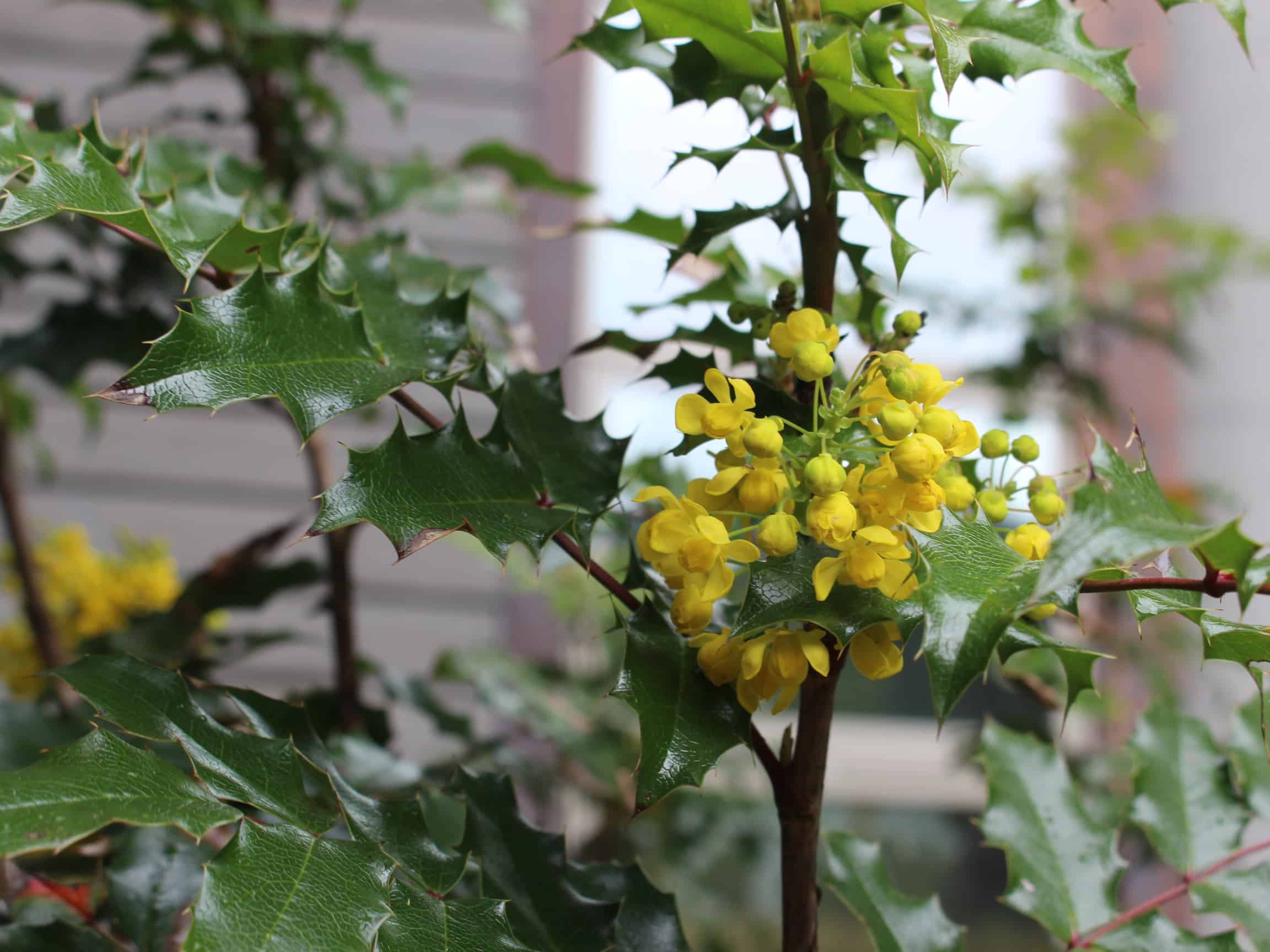
The tall Oregon grape, found usually on the east side of the mountains, is currently in bloom on campus at the Environmental Learning Center. The tall Oregon grape can be distinguished from the Cascade Oregon grape, one of the most common understory plant on the westside of the North Cascades, by leaves and size. The tall Oregon grape has 5-9 holly-like leaflets on each leaf whereas the Cascade Oregon grape can have 11-21 leaflets. The Tall Oregon grape can reach up to ten feet tall which is quite a bit larger than the 2-4 foot tall Cascade Oregon grape! Both species of Oregon grape have yellow flowers in the spring and bitter light blue edible berries in the summer. It is noteworthy that the tall Oregon grape and the Cascade Oregon grape are both found at the learning center when these species are usually isolated to the East and West of the Cascade Crest.
~ Western Trillium (Trillium ovatum)~
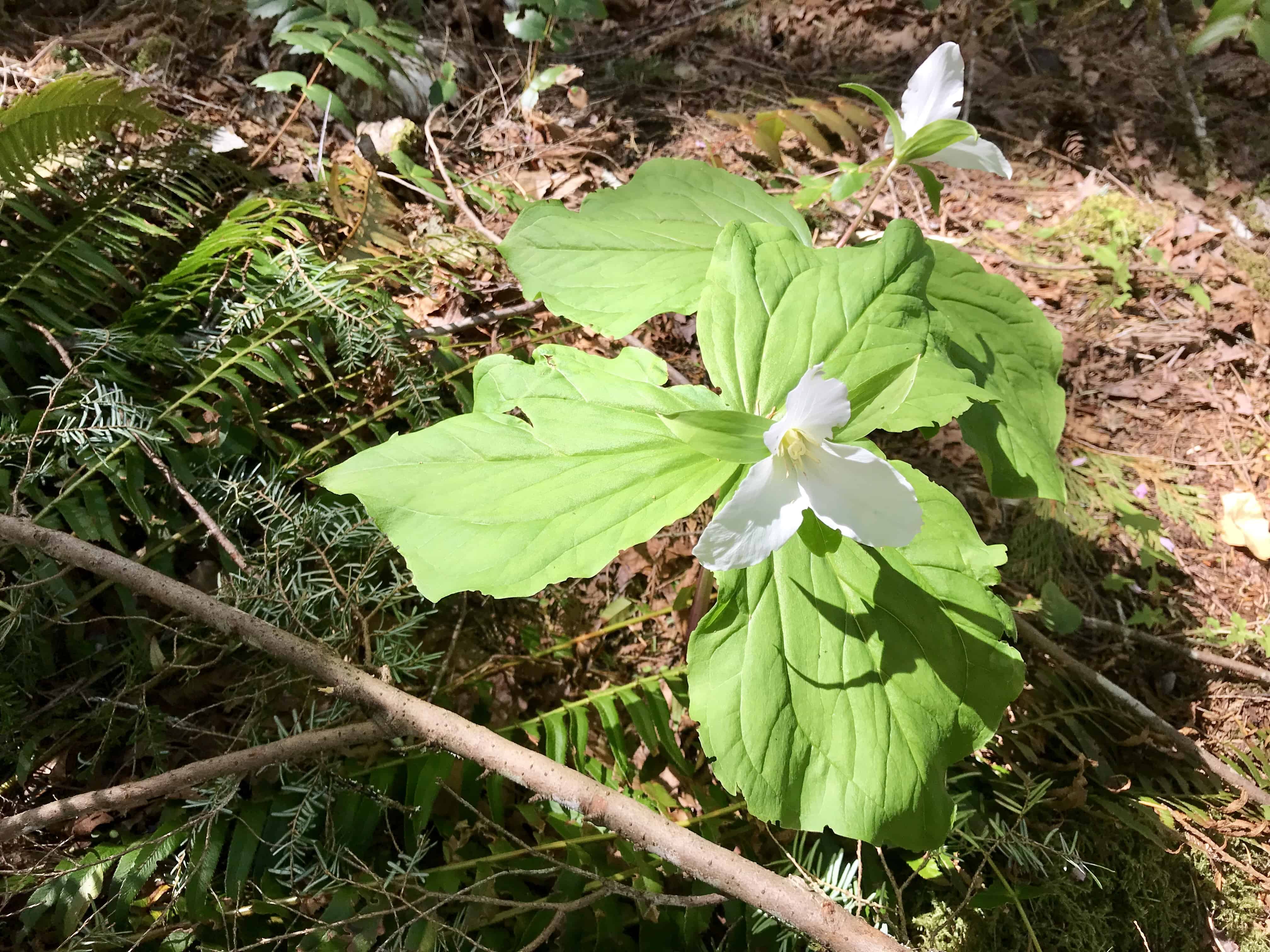
Nestled in the center of three large leaves (5-7 inches) rests the three petaled trillium flower surrounded by three sepals. Trillium, latin for “in- threes” describes this plant perfectly. Western Trillium is also known as the wake-robin because it is said that the bloom of the trillium flowers in the early spring correlates with the arrival of robins. The flower may be white or pink depending on the age of the plant. Younger, viable plants have white flowers and older plants flower purple to attract pollinators. Once the flower has been pollinated, the resulting seeds each have an oily appendage that ants like to bring back to their nests to consume. Once the appendages are consumed, the seeds are discarded and dispersed into new habitat. The ants are fed and the Trillium is dispersed. The mutualistic symbiosis of trillium and ants remind me that in relationship we are stronger than when we choose to stand alone.
The flowering plants listed above are only a few that you may observe up at the Environmental Learning Center. The landscape is awakening. In the next few weeks, I encourage you all to wander and wonder at the beauty of spring and the gifts that it harolds.
Sources:
- MacKinnon, A., Pojar, J., & Alaback, P. B. (1994). Plants of the Pacific Northwest coast: Washington, Oregon, British Columbia & Alaska. Richmond, Wash: Lone Pine Publishing.
- Mathews, D. (2016). Natural history of the Pacific Northwest mountains : Plants, animals, fungi, geology, climate (Timber Press field guide). Portland, Oregon: Timber Press.
- All photographs were taken by Nicola Follis around the Environmental Learning Center Campus on Diablo Lake.
If you’d like to learn more about flowering plants of the North Cascades, be sure to register for the Sauk Mountain Wildflower Wander on July 28th.
You can help North Cascades Institute continue to educate our community about local ecology and environmental issues by making a donation during our Give BIG campaign. Learn more at ncascades.org/givebig. Thank you!

